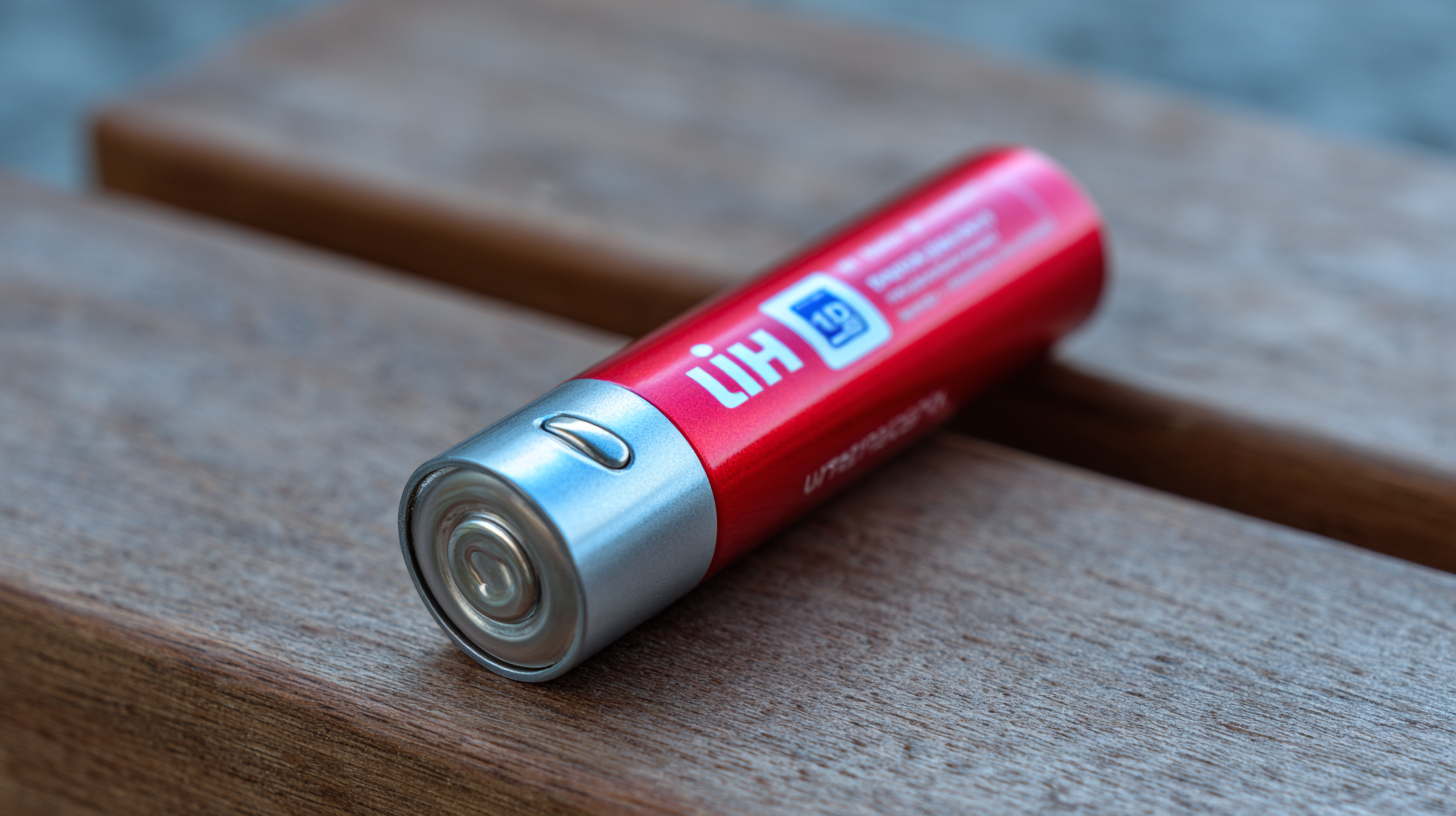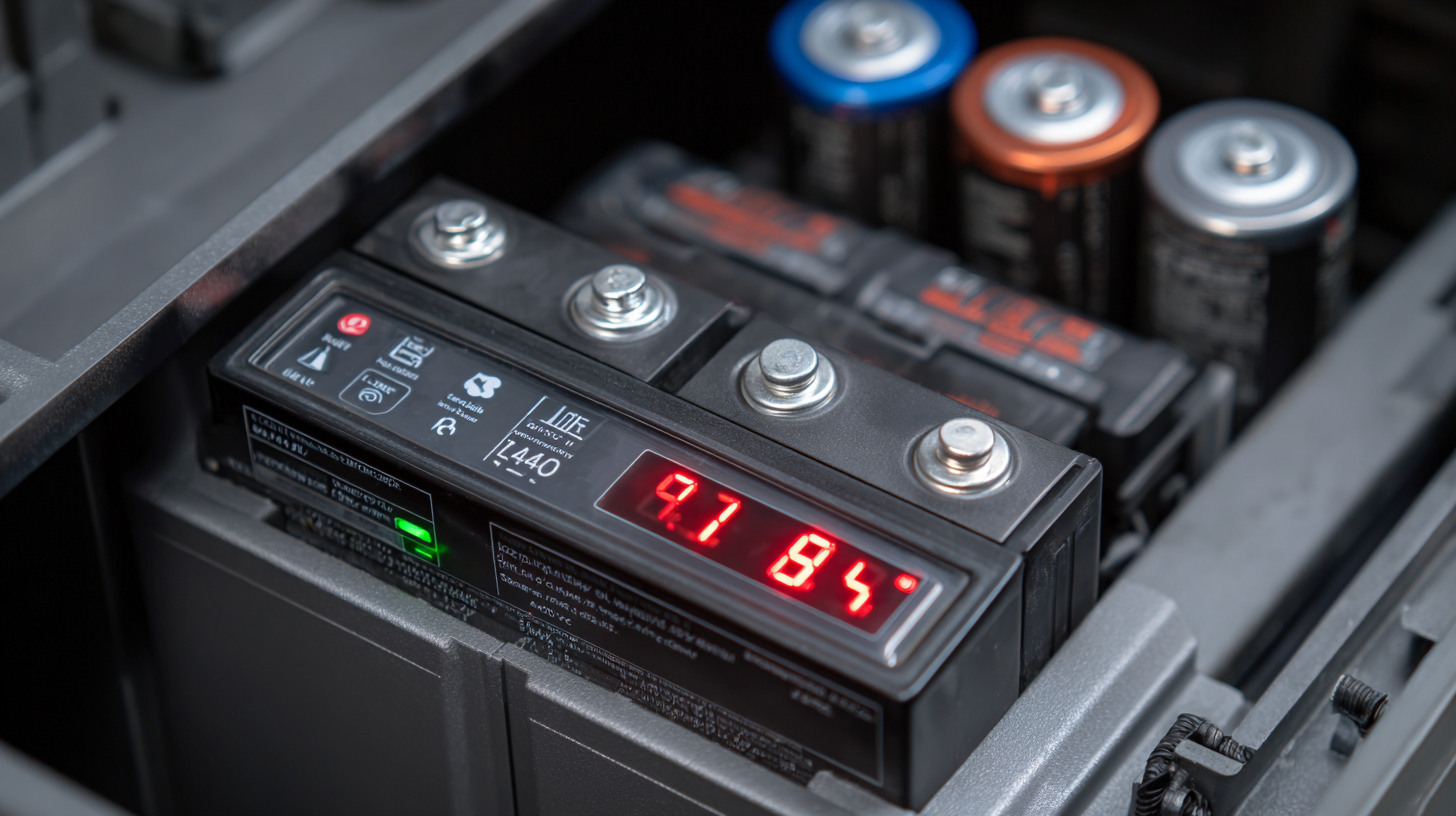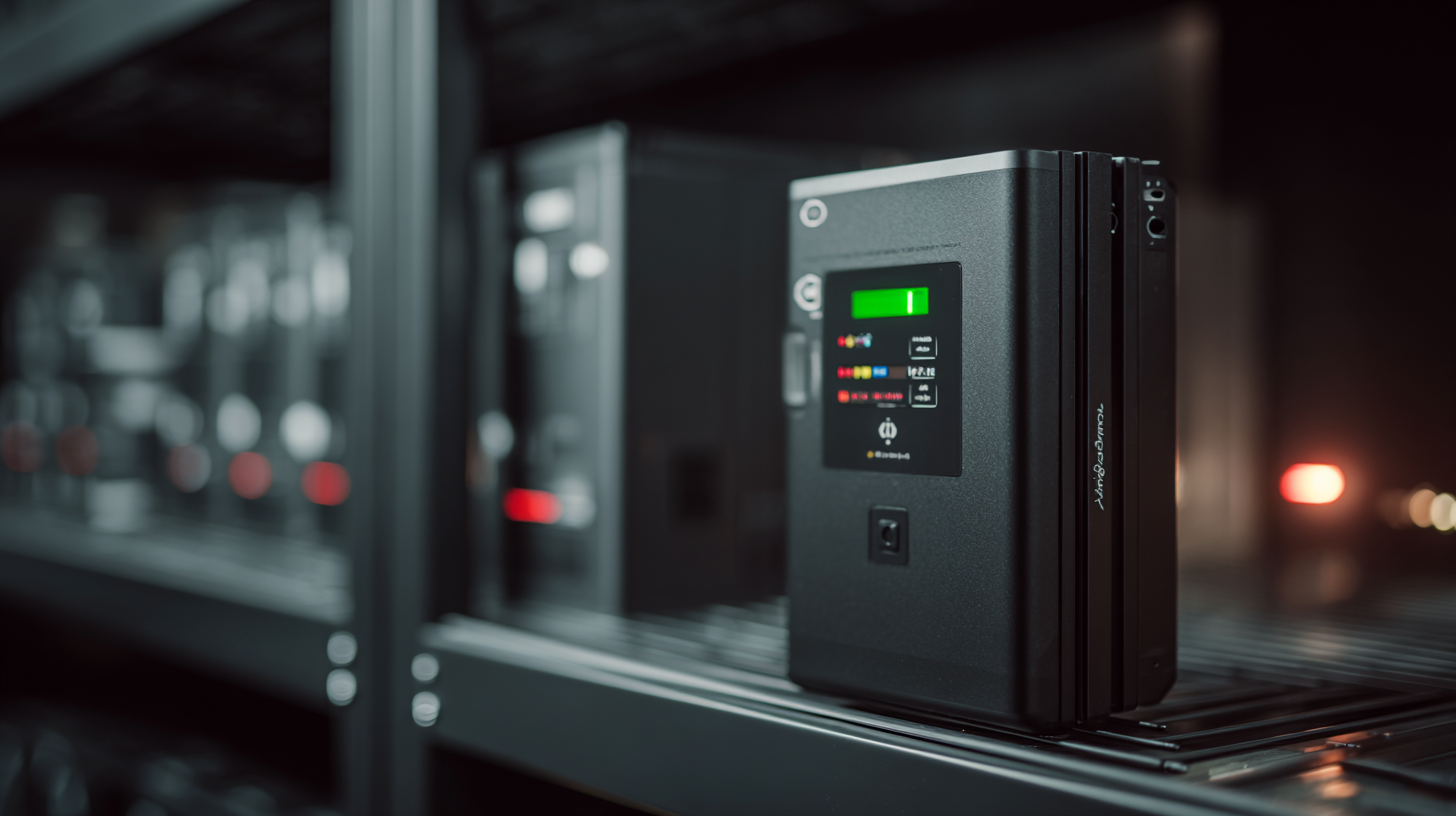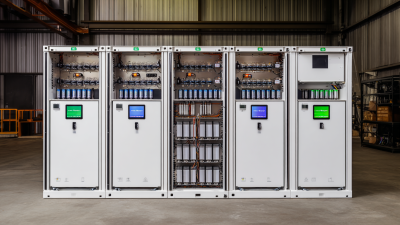5 Essential Tips for Maximizing Your Energy Storage Lifep04 Battery Performance
As the demand for renewable energy continues to rise, so does the need for efficient Energy Storage Lifep04 Battery solutions that can optimize performance and longevity. According to a recent report from the International Energy Agency (IEA), global energy storage capacity is expected to grow by over 200% by 2030, underscoring the critical role of advanced battery technologies. Lithium Iron Phosphate (LiFePO4) batteries, known for their thermal stability, safety features, and longer cycle life, are becoming increasingly popular in various applications, from electric vehicles to stationary energy systems.

However, to fully leverage the advantages of Energy Storage Lifep04 Battery technology, users must understand the best practices that enhance battery performance. In this blog, we will explore five essential tips that can significantly impact the efficiency and lifespan of your energy storage solutions.
Understanding the Basics of Lifepo4 Battery Technology
The recent announcement regarding the adoption of lithium iron phosphate (LiFePO4) technology emphasizes the ongoing interest in this battery chemistry, particularly given its balance of cost, safety, and longevity. As we explore the basics of LiFePO4 technology, it becomes evident that this chemistry not only offers improved thermal stability but also enhances cycle life, making it a reliable choice for many applications. These characteristics are vital for users seeking consistent performance and resilience in their energy storage systems.
With advancements in LiFePO4 battery performance, the introduction of new high-capacity battery packs signals a significant shift in market strategies. While some might debate whether this move is a technological leap or a step backward, the advantages of LiFePO4—such as lower environmental impact and stable performance across various temperatures—suggest that it remains a strong contender in the energy storage landscape. As the industry evolves, understanding the inherent benefits of LiFePO4 could help consumers make informed choices, maximizing the efficiency and lifespan of their energy storage solutions.
5 Essential Tips for Maximizing Your Lifepo4 Battery Performance
This chart illustrates the performance impact percentage of various essential tips for maximizing Lifepo4 battery usage. By following these tips, users can significantly enhance the longevity and efficiency of their energy storage systems.
Key Factors Influencing Lifepo4 Battery Performance
When it comes to optimizing the performance of LiFePO4 batteries, several key factors play a crucial role. Firstly, temperature control is vital. LiFePO4 batteries thrive in moderate conditions, ideally between 20°C to 25°C. Extreme temperatures can lead to reduced performance and accelerated degradation. Ensuring proper thermal management through ventilation or insulation can significantly enhance battery longevity and efficiency.
 Another important factor is the charge and discharge rates. Adhering to the recommended specifications helps maintain the integrity of the battery cells. Rapid charging or discharging can lead to thermal stress and increased wear, ultimately shortening the lifespan of the battery. Therefore, following the manufacturer's guidelines for current rates and using appropriate charging equipment is essential in safeguarding battery performance.
Another important factor is the charge and discharge rates. Adhering to the recommended specifications helps maintain the integrity of the battery cells. Rapid charging or discharging can lead to thermal stress and increased wear, ultimately shortening the lifespan of the battery. Therefore, following the manufacturer's guidelines for current rates and using appropriate charging equipment is essential in safeguarding battery performance.
Additionally, maintaining a proper state of charge (SOC) is crucial. LiFePO4 batteries prefer to operate within a specific SOC range, typically between 20% to 80%. Regularly allowing the battery to drop too low or overcharging it can lead to capacity fade. By monitoring and managing the SOC effectively, users can significantly enhance the operational life and reliability of their LiFePO4 battery systems.
Best Practices for Charging and Discharging Lifepo4 Batteries
When it comes to maximizing the performance of LiFePO4 batteries, understanding best practices for charging and discharging is crucial. Firstly, maintaining a balanced charging routine can significantly extend the lifespan of your battery. Industry reports indicate that using a charger specifically designed for lithium batteries can help maintain optimal voltage levels, ensuring that each cell is charged correctly and efficiently, which is vital due to the electrochemical characteristics of these batteries. For instance, differential voltage analysis in battery manufacturing has highlighted the importance of monitoring voltage to prevent overcharging, a leading factor in battery degradation.
Moreover, the discharge practices for LiFePO4 batteries should also be carefully considered. It is recommended to avoid deep discharges, as keeping the battery in a moderate state of charge can enhance its longevity. Reports suggest that regularly discharging to around 20% capacity instead of allowing it to deplete completely helps in maintaining health over time. Additionally, electrochemical impedance spectroscopy provides a non-destructive method to evaluate battery health, showing how performance can drop if batteries are frequently pushed to their limits. By adhering to these fundamental charging and discharging practices, users can ensure enhanced performance and an extended life for their LiFePO4 battery systems.
5 Essential Tips for Maximizing Your Energy Storage Lifepo4 Battery Performance
| Tip | Description | Best Practice | Impact on Performance |
|---|---|---|---|
| Proper Charging | Charge the battery using a compatible charger. | Use a constant current and constant voltage (CC/CV) method. | Enhances battery lifespan and efficiency. |
| Avoid Over-Discharging | Discharging below recommended voltage can damage the battery. | Set a discharge cut-off voltage level. | Preserves capacity and improves safety. |
| Optimal Temperature | Keep batteries at a temperature within the recommended range. | Avoid extreme heat and cold conditions. | Maximizes charging capacity and cycle life. |
| Regular Maintenance | Inspect connections and clean terminals regularly. | Perform maintenance checks every few months. | Reduces the risk of failure and prolongs lifespan. |
| Balanced Charging | Ensure that all cells in a battery pack are charged evenly. | Use a battery management system (BMS). | Improves overall performance and safety. |
Effective Temperature Management for Lifepo4 Batteries
When it comes to maximizing the performance of your LiFePO4 (lithium iron phosphate) batteries, effective temperature management is crucial. These batteries thrive within a specific temperature range, typically between 20°C and 30°C. Exposure to extreme temperatures can diminish their lifespan and efficiency significantly. Therefore, ensuring that your batteries are stored and operated within this range will not only optimize their performance but also enhance their longevity.

To maintain optimal temperature levels, consider implementing temperature regulation systems where your batteries are installed. Insulating the battery housing can help protect against temperature fluctuations caused by external conditions. Additionally, using active cooling methods, such as fans or liquid cooling systems, can help dissipate heat during intensive usage, particularly in applications like electric vehicles or solar energy storage.
Regular monitoring of battery temperature is equally important. Investing in temperature sensors and control systems can provide real-time data, allowing you to make adjustments as required. This proactive approach ensures that your LiFePO4 batteries operate efficiently, maximizing both their performance and overall lifespan. By focusing on effective temperature management, you can ensure that your energy storage solutions remain dependable and efficient.
Regular Maintenance Tips to Extend Lifepo4 Battery Life
To ensure the longevity and optimal performance of your LiFePO4 battery, regular maintenance is crucial. Studies show that with proper care, LiFePO4 batteries can last up to 10 years or more, making them a superb long-term investment. Key maintenance tips include keeping the battery clean and free from dust and debris, which can impact its thermal management and efficiency. Regularly checking the terminals for corrosion can prevent unnecessary power loss and ensure reliable energy flow.
Another vital aspect of maintenance involves monitoring the battery's state of charge (SOC). Industry reports highlight that keeping the battery within a 20-80% charge range can significantly prolong its life cycle. Deep discharging or overcharging can lead to reduced capacity and shorten the battery’s overall lifespan. Additionally, periodic inspection of the battery management system (BMS) for faults or alerts is recommended, as a well-functioning BMS optimizes the charge cycles and prevents damage from overheating. By implementing these maintenance practices, users can maximize the performance and lifespan of their LiFePO4 batteries, ultimately enhancing their energy storage solutions.

Related Posts
-

7 Compelling Reasons to Choose Best Energy Storage Lifep04 Battery for Your Business Needs
-

Unlocking the Future: Advantages of the Best Energy Storage LiFePO4 Battery for Global Buyers
-

The Complete Guide to Choosing the Best Flow Batteries for Your Energy Needs
-

5 Best Strategies for Power Storage Battery Efficiency
-

How to Maximize Energy Storage Efficiency with Vanadium Redox Flow Batteries
-

Exploring Innovative Solutions for Sustainable Energy with Flow Batteries
